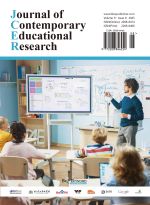Abstract
The classroom participation is influenced by quality courses and teachers, and seat selection is an indicator of students’ willingness to participate in the classroom. This study utilized a questionnaire to explore the dynamic mechanism underlying how teacher-student proximity and course importance affect classroom engagement. A survey on seat selection was conducted with 500 students across four grades (A, B, C, D) based on their academic performance. A simulated classroom was used to ask students about seat selection in different conditions, related to course importance predetermined by the school authorities (C1: important, C2: not important, C0: unknown) and teacher likeability judged by students themselves (T1: very popular, T2: not popular, T0: unknown). Important courses and well-liked teachers encourage students to opt for front seats. The seat selection among students of different grades varied significantly in the conditions that were established, except for C0T1. High-performing students (those allotted A grade) chose seats closer to the front of the class in comparison with their lower-performing peers in all set conditions. Further, course importance has more influence on students’ seat choices than the popularity of the teacher. The data collected from low-performing students (with D grade) reflect the opposite results. This study reveals the relationship between classroom seating and performance, emphasizing the importance of enhancing students’ classroom participation willingness for the improvement of teaching effectiveness in university.
References
Almulla M, 2023, Constructivism learning theory: A paradigm for students’ critical thinking, creativity, and problem solving to affect academic performance in higher education, Cogent Education, 10(1): 2172929.
Bunce L, Baird A, Jones S, 2017, The student-as-consumer approach in higher education and its effects on academic performance, Studies in Higher Education, 42(11): 1958–1978.
Al-Rahmi A, Al-Rahmi W, Aldraiweesh A, et al., 2021, Exploring the factors affecting mobile learning for sustainability in higher education, Sustainability, 13: 7893.
Mulryan-Kyne C, 2010, Teaching large classes at college and university level: challenges and opportunities, Teaching in Higher Education, 15(2): 175–185.
Losonczy-Marshall M, Marshall P, 2013, Factors in students’ seat selection: an exploratory study, Psychological Reports, 112(2): 651–666.
Alalwan N, Al-Rahmi W, Alfarraj O, et al., 2019, Integrated three theories to develop a model of factors affecting students’ academic performance in higher education, IEEE Access, 7: 98725–98742.
Ellis A, Bernard M, 1986, What is rational-emotive therapy (RET)? In: Handbook of Rational Emotive Therapy, 3–30.
Deen S, Turner M, Wong R, 2017, The effects of REBT, and the use of credos, on irrational beliefs and resilience qualities in athletes, The Sport Psychologist, 31(3): 249–263.
Chin C, Osborne J, 2008, Students’ questions: a potential resource for teaching and learning science, Studies in Science Education, 44(1): 1–39.
Sidin S, 2021, The application of reward and punishment in teaching adolescents, Ninth International Conference on Language and Arts (ICLA 2020); Atlantis Press: 251–255.
